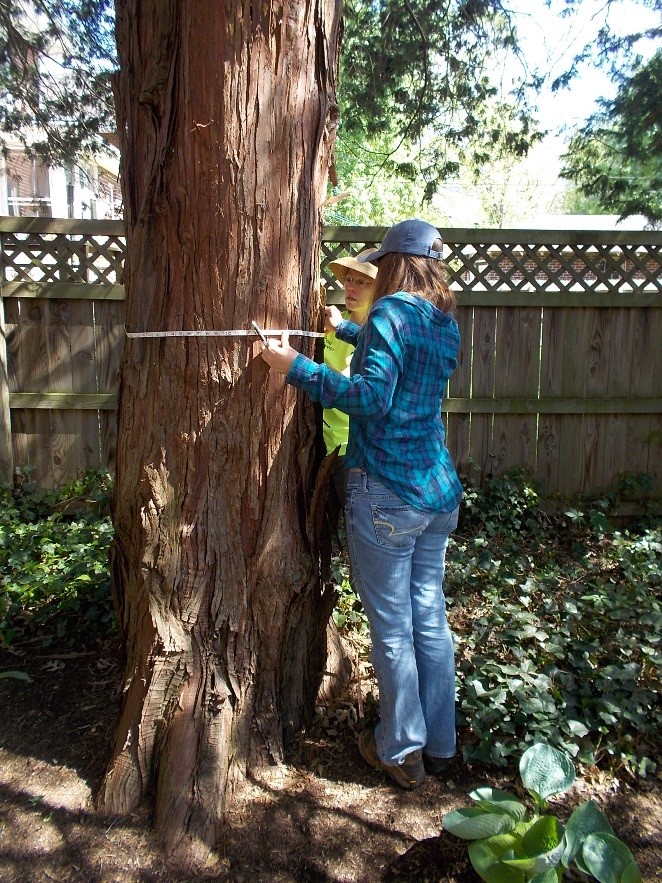How to Measure a Big Tree
 Trees are ranked in the Virginia Big Tree Register using a scoring system that is based on measurements of their physical dimensions:
Trees are ranked in the Virginia Big Tree Register using a scoring system that is based on measurements of their physical dimensions:
- Trunk circumference measured in inches at 4.5 feet above ground level
- Total height measured in feet
- Average crown spread measured in feet
The basic tools needed to measure a tree are a yardstick and a 100’ measuring tape. Trees with abnormal growth habit or on steep terrain will require specialized tools and techniques to obtain accurate measurements. Contact a Big Tree Volunteer if you need assistance measuring a tree.
A pictorial guide to measuring big trees is available here.
Once tree measurements have been taken, the big tree score can be calculated using this formula:
Score (Total points) = trunk circumference (in.) + tree height (ft.) + ¼ average crown spread (ft.)
Note that only one-quarter point is award for each foot of average crown spread.
Our measuring and scoring system is adopted from the National Champion Tree Program. For an in-depth look at tree measurement methods, refer to the Measuring Guidelines Handbook.
How does your tree compare?
Use the calculator below to determine the score for a big tree you have found. Enter the measurements of your tree and press the submit button. Along with the score, a list of big trees in the register will be displayed based on the species name you provide.
The more specific the name you provide, the more specific the comparison provided by the calculator. If you type oak, then all species of oak will be displayed. If you type white oak, then both white oak trees and swamp white oak trees will be displayed. Typing a Latin name will give you the most precise comparison for your tree.